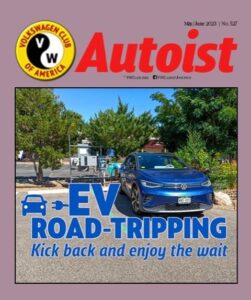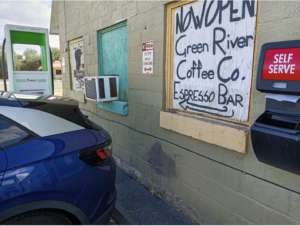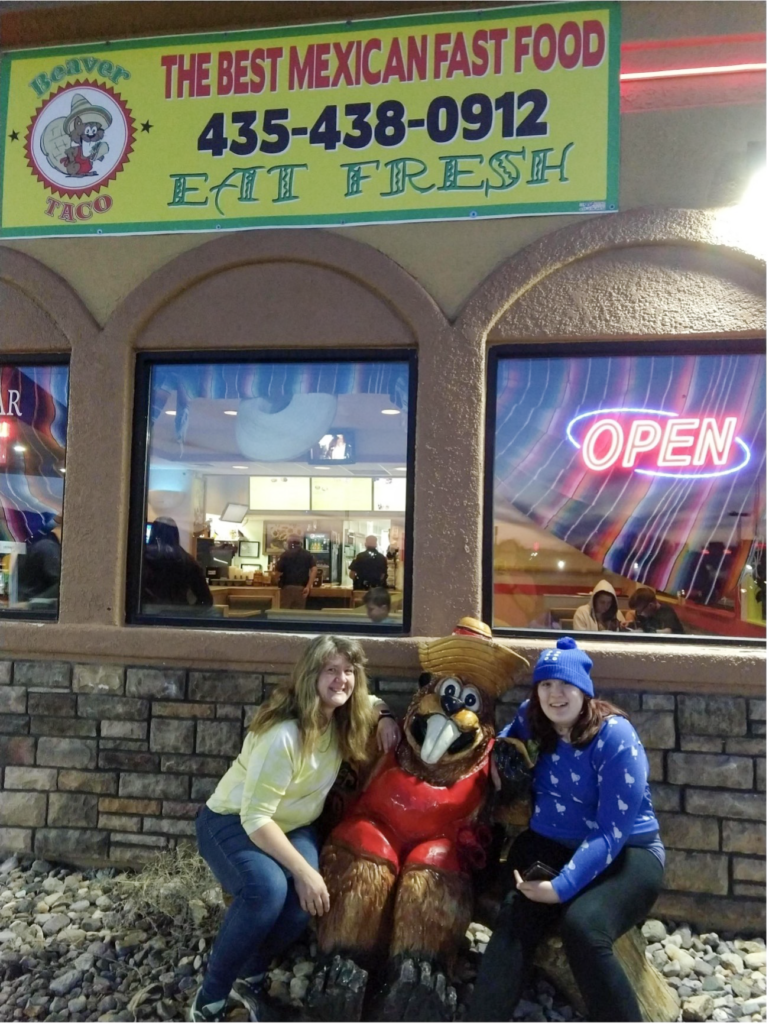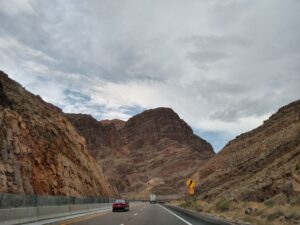How a VW ID.4 tackled a 765-mile trek
Food and charging go hand-in-hand
By Todd Allcock
It’s no secret that one of the major stumbling blocks to the mass adoption of electric vehicles in the USA is one of the most quintessentially American experiences of car ownership: The Great American Road Trip!
I can wax poetically all day about how modern EVs have enough range and how there are sufficient chargers available to road-trip in an EV, but I thought I’d go one better and share the same trip I’ve made in both a gas-powered car and an EV, my Volkswagen ID.4.
The trip: a 765-mile voyage from Denver to Las Vegas. Let’s look at how long it’s “supposed” to take, and how long it really took me in both a gas car and an EV.

Google Maps tells us this trip should take about 11 hours. Google, of course, assumes a long continuous drive with no stopping, so I take that as a theoretical ideal rather than a target.
Spoiler alert: there isn’t going to be any shock ending or “A-ha!” moment where I announce “amazingly, it was actually faster in the EV!” Of course it wasn’t. Charging an EV, even at the fastest chargers, takes longer than filling a gas tank. The questions I hope you’re asking at this point are “how much longer did it take?” and “could I put up with that extra time on a few road trips a year?” The answers to those questions might help convince you that you’re ready to look at an EV like the ID.4 the next time you’re in the market for a car.
First, let’s look at my last gas-powered drive to Las Vegas, back in March 2019. We hit the road in a rented Hyundai Santa Fe, a car with a 29 highway MPG rating (we got more like 25) and 19-gallon gas tank. This gave us nearly a 500-mile range and would allow us to drive the 765 miles to Vegas with only one fueling stop.

While we often talk about range being one of the greatest advantages gas cars have over EVs, any parent can tell you that a car full of kids isn’t likely to drive from full to empty without a few extra stops along the way, so we stopped more often than the car needed to for bathroom breaks and snacks. Four stops in all, including an hour at Beaver Taco in Beaver, Utah (highly recommended!) for dinner. Lunch was a 12-minute drive-thru/eat on-the-road meal from Carl’s Jr., the only fast-food chain at the time that offered plant-based burgers for my vegetarian kids.
Total travel time, 12 hours and 33 minutes: 11 hours and 5 minutes of drive time (nice prediction, Google!) and 1 hour and 27 minutes stopped, including a whopping 11 minutes at a gas station to refuel. Since buying an EV, I’ve never made that trip as quickly again.
British comedian, actor, podcaster and EV evangelist Robert Llewellyn often jokes that the range of his EV only has to exceed the range of his bladder. At my age, stopping every two hours or so is pretty much a necessity, so if the charging stops aren’t much longer than the time it takes to use the bathroom and grab a coffee or soda, there will be few downsides to traveling by EV vs. a gas car. Sadly, EVs aren’t quite there yet, but they’re getting closer. Most charging stops are still around 30 minutes to the recommended 80% level, not the 5-10 minutes of a gas-filling stop, and with range of about half of a comparable gas-powered car, you need to stop more often.
In August 2022, the kids and I decided to crash another of my wife’s conferences in Vegas. We set off a little before 10 a.m. and drove 21/2 hours to Glenwood Springs, Colorado, to grab a charge at the Target store, use the restrooms and send the kids off to shop for whatever teenaged girls shop for. Thirty minutes later, we were back on the road heading toward the kids’ favorite pizza place for a late lunch/early dinner in Grand Junction — Pablo’s Pizza (also highly recommended!).
A cardinal rule in EV road-tripping requires that you should never stop to eat anywhere you can’t also take the opportunity to charge. Arriving in Grand Junction, we didn’t break the rule, but we did bend it a little. Pablo’s isn’t near a fast charger, but it’s near a public library in Grand Junction that operates an old 25 kw DC charger that would take about two to three hours to fully charge the car.
We only needed enough of a charge to make it to our next stop, Green River, Utah, so I opted to support the library and pay $8 for a charge while we ate at Pablo’s, rather than eat and then immediately stop again at a faster station and sit around for another 20 minutes or so right after stopping for lunch. The library did the trick, giving us more than enough of a charge to drive the 90 minutes to Green River and charge again.

Green River was a mandatory stop to charge up before crossing the 108-mile charging desert of Interstate 70 between Green River and Salina, Utah, a no-man’s land with no services; no gas stations, no restaurants, no retail stores and certainly no EV chargers!
The only hiccup of the trip was bad timing — we didn’t make it to Beaver Taco for a late dinner before it closed at 9 p.m., arriving about 15 minutes too late, and decided we’d hit it on the way out of Vegas on the trip home. So, dinner was leftover Pablo’s pizza, and we drove toward Vegas without any further issues.
As expected, the total trip time was longer than the gas-powered trip in the Hyundai. We kept the speed on the trip between 75 and 80 mph, vs. the 80-85 mph we drove the Hyundai. The total driving time was 11 hours and 43 minutes, and we spent 3 hours and 38 minutes stopped on the trip, (including the hour and a quarter at Pablo’s for lunch) for a total trip time of 15 hours and 21 minutes: 22.5% (or nearly three hours) longer than the length of our gas drive three years before.
Since that trip, we’ve also done a Denver-to-Salt Lake round trip, and a Denver to Omaha, Nebraska, round trip, and the electric time “penalty” vs. driving a gas car seems to stubbornly stay between 20 and 25% with the ID.4, so I’d suggest that’s a good approximation to use if you’re trying to quickly estimate how long your usual road trip times might increase were you to make the transition to electric in a Volkswagen ID.4.
Alternatively, you might consult any number of EV route planning apps or websites to estimate road trip time in an ID.4. You can see my overview of some of these on Page 24. VWCA
Todd Allcock | tallcock@aol.com
ALSO IN THIS ISSUE:
- AHEAD OF ITS TIME: VW broke new ground in the 1970s with its computer diagnosis.
- 350,000 MILES AND COUNTING: Taking questions on how a 1983 Scirocco maintains its staying power.
PLUS OUR REGULAR COLUMNS AND FEATURES:
- Small Talk – VW + Audi at a glance
- Retro Autoist – From the VWCA archives
- The Frontdriver – Richard Van Treuren
- Local Volks – Activities of VWCA affiliates
- ID.Insight – Todd Allcock
- VolksWoman – Lois Grace
- Classified – . . . ads from members and others
- Parting Shot – Photo feature
- VW Toon-ups – Cartoon feature by Tom Janiszewski
LOGGED-IN MEMBERS CAN SEE THE ENTIRE AUTOIST ISSUE BY CLICKING ON THE “AUTOIST ARCHIVE” OPTION UNDER THE “AUTOIST” TAB.
